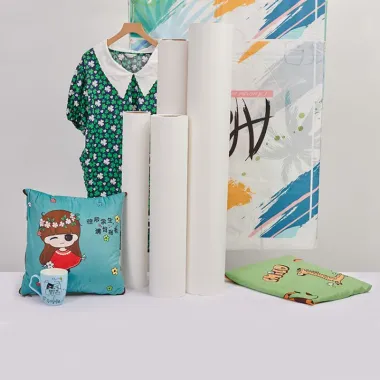Advantages and Benefits of Using Sticky Sublimation Paper
1. Introduction to Sticky Sublimation Paper
Sticky sublimation paper is a specialized printing medium designed for heat transfer applications. It enables the transfer of high-quality images, designs, and patterns onto various fabrics and surfaces. This unique paper features a sticky coating on one side, which helps to hold the fabric in place during the printing process. Whether you're a professional textile printer or a hobbyist, sticky sublimation paper is an essential tool to unlock your creative potential.
2. Understanding the Composition of Sticky Sublimation Paper
Sticky sublimation paper consists of several layers carefully engineered to facilitate the transfer of ink onto fabrics. The topmost layer is a microporous coating that holds the sublimation inks. Below that, a high-quality base paper provides stability and support. The bottom layer is the adhesive coating, which securely adheres the paper to the fabric during the heat transfer process.
3. How Sticky Sublimation Paper Works
The working principle of sticky sublimation paper involves a combination of heat, pressure, and sublimation inks. First, the design is printed onto the coated side of the paper using sublimation ink. The paper is then placed on top of the fabric with the coated side facing down. Heat and pressure are applied, causing the sublimation ink to turn into a gas and penetrate the fabric fibers. As the ink cools, it solidifies, resulting in a permanent and vibrant image.
4. Advantages and Benefits of Using Sticky Sublimation Paper
Using sticky sublimation paper offers numerous advantages for fabric printing:
a) Enhanced Precision and Detail
The sticky coating on the paper ensures that the fabric remains in place during the printing process, minimizing movement and blurring. This leads to sharper and more accurate prints with intricate details.
b) Vibrant and Long-Lasting Colors
Sublimation inks have excellent color vibrancy and saturation. When combined with sticky sublimation paper, the colors are fully absorbed by the fabric, resulting in prints that are resistant to fading, cracking, and peeling.
c) Versatility and Compatibility
Sticky sublimation paper is compatible with a wide range of fabrics, including polyester, spandex, nylon, and blends. It can be used for various applications, such as apparel, home textiles, promotional items, and personalized gifts.
d) Time and Cost Efficiency
Compared to traditional printing methods, sublimation printing with sticky sublimation paper offers faster production times and reduces the need for separate color screens or plates. It also allows for on-demand printing, minimizing waste and inventory costs.
5. Applications of Sticky Sublimation Paper
OEM sublimation paper finds application in various industries and creative endeavors. Some popular applications include:
a) Apparel Printing
Sticky sublimation paper enables the creation of vibrant and durable designs on garments such as t-shirts, jerseys, activewear, and fashion accessories. The prints can withstand repeated washing and maintain their original quality.
b) Home Textiles
Personalize your home decor with sticky sublimation paper. Create custom-designed pillows, curtains, tablecloths, and beddings that reflect your unique style. The prints are fade-resistant and can withstand everyday use.
c) Promotional Items
For businesses and marketing campaigns, sticky sublimation paper offers a cost-effective solution for producing branded promotional items like bags, mugs, mousepads, and keychains. The prints are sharp, vivid, and long-lasting, ensuring maximum brand visibility.
d) Customized Gifts
Make special moments unforgettable by gifting personalized items made with sticky sublimation paper. Whether it's a photo mug, a custom-printed puzzle, or a unique piece of clothing, the recipient will cherish the thoughtful gesture.
- 0



